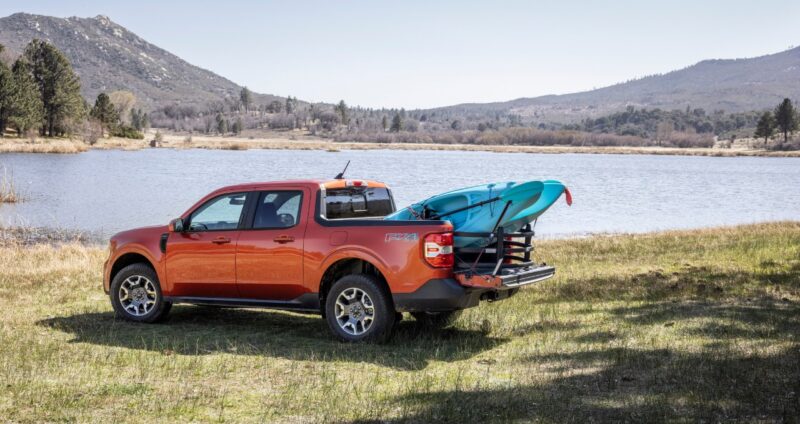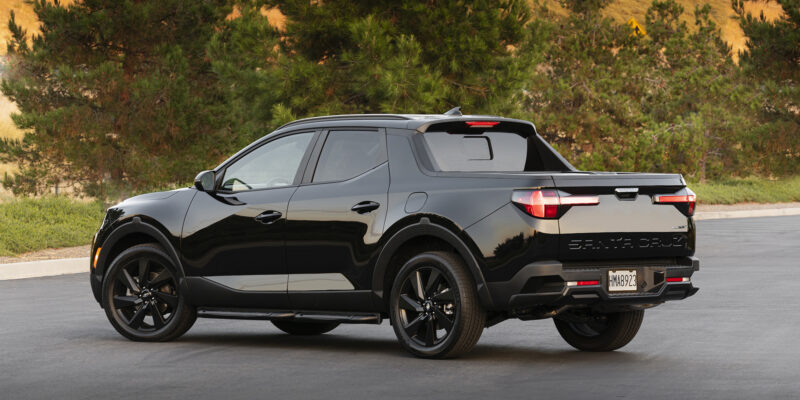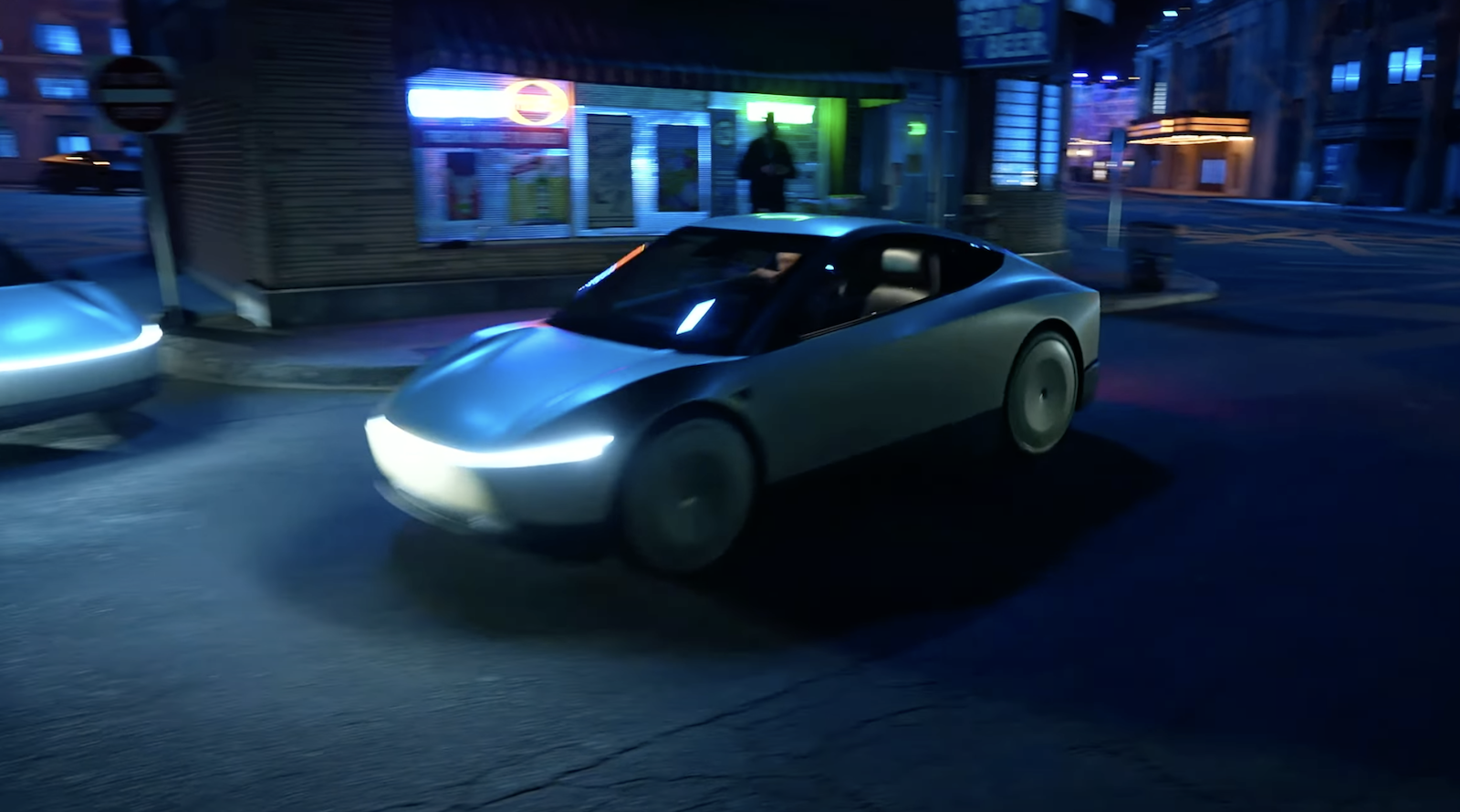Sign up for daily news updates from CleanTechnica on email. Or follow us on Google News!
In another recent article, I argued that automakers had better not become complacent when it comes to tariffs against Chinese EVs. Why? Because there’s no way that lasts forever. Market forces can’t be held back indefinitely, and eventually either buyers will pressure the government to lower the tariffs or other imports will drop in price and kill off the remaining ICE dinosaurs. For all these reasons, automakers would be foolish to assume that the tariffs will protect them forever, but we saw them assume 2022’s insane pricing would last forever, so we shouldn’t put it past them.
Among other ideas I offered, I suggested that manufacturers should both work to lower prices while also playing to their own strengths. Among these strengths are the companies’ ability to sell trucks and SUVs (even if the definition of SUV has been stretched over the years to include chunky cars, aka crossovers).
The return of the Chevy Bolt plays right into this. To make room for production, the company is shutting down Malibu production, further distancing itself from sedans. Also, only the EUV will be coming back, without a smaller, more wedge-faced sibling. Again, Detroit knows that American buyers want something that’s a crossover and not a hatchback, so the vehicle has to at least somewhat look the part. So, the little Bolt is out in favor of what the Bolt probably should have been all along.
GM also knows that the slow charging is the biggest weakness for Bolts. With a maximum of 55 kW charging speed that starts to slow down before 50%, it can take 45-50 minutes to get enough charge to get to the next stop on western interstates. If you need to go from 10%-full, it can take a little over a hour and a half. Ouch. So, the company is going to improve the situation with faster charging and a battery that can handle sitting toward 100% more often (using LFP cells).
The end result is definitely going to be a hit if they can keep the starting price under $30,000. It will check all the boxes.
Reasonably affordable for a new car? Check.
Room for older kids and adults in the back seat? Check.
SUV-like lines? Check.
Faster charging? Check.
Battery durability? Check.
Has a pickup bed? BONK!
Let’s talk about why that last one matters, and then why GM should make a Bolt variant with a small bed.
Little Trucks Are Coming Back
While there aren’t any little EV trucks, we’re seeing small pickup trucks make a serious comeback in the U.S. market. While big trucks have gotten bigger, the small segment was almost completely abandoned. But, buyers don’t all want giant trucks, and manufacturers are figuring this out (and making some serious money).

The best example is Ford’s Maverick. Unlike most trucks, it’s not of body-on-frame construction. Instead, the manufacturer kept costs low by opting for a unibody and sharing a platform with other crossovers the company also offers, not unlike the Honda Ridgeline. But, unlike the Ridgeline (which shares underpinnings with Honda’s Pilot and Acura MDX crossovers), Ford decided to offer something special: a hybrid drivetrain that gets around 40 MPG when driven judiciously.
This has made the truck become a smash hit. Demand for the efficient hybrid version was so high that a salesman laughed when my dad called a dealer and asked about getting one!

Ford’s not the only manufacturer figuring out that Americans want a small and efficient vehicle for minor work duty and outdoor fun. Hyundai’s Santa Cruz follows basically the same formula, essentially chopping off the end of a Hyundai Tucson and putting a small bed on the back instead of interior cargo room. While not offered with a hybrid (yet), it’s still a lot smaller and more efficient than most pickups, making for better efficiency, better handling, and easier maneuvering in tight spaces.
So, yes, there is indeed huge demand for an efficient, small pickup truck. And, nobody’s currently offering anything like that as an EV.
How GM Can Do This Right For Cheap
In many ways, the Bolt platform is the perfect place to start to produce a small, low cost electric pickup. The company is already putting in big money to make the new Bolt even cheaper to build than the current one while offering better charging speeds, and we know that the platform is adaptable (after all, GM’s engineers were able to make two different versions already). It’s also not overly optimized for a sleek body shape, giving room to make a small truck without wild efficiency losses.
The obvious starting point is to stop the roofline behind the back seats, extend the base of the platform out a foot or two, and then build a bed instead of a cargo area, much like Hyundai did with the Tucson to make the Santa Cruz. Add in an accessory you can put to extend the bed a bit more (like the Subaru Baja or the Maverick pictured above), add a roof rack and mounting points for a rail system over the bed, and you could end up with a very versatile vehicle despite the short bed.
But, being a GM EV gives room for some things that would put it head and shoulders above the competition. Using a midgate like the Avalanche and the upcoming non-fleet Silverado EV, combined with a tailgate fence, could make for a bed that’s almost full-length! That would sell the pickup to a lot of people who occasionally pick up boards at Home Depot. Being an EV, power outlets could be added to the bed, giving both campers and people buying for light jobs the ability to use the truck even more.
To get better numbers, I’d suggest GM offer a folding canvas cargo cover that enhances the pickup’s aerodynamic lines while protecting the contents in the bed. This would allow for better EPA range and the added bonus of extra range for people who keep it attached on highway trips. Room can obviously be left for other aftermarket shells for people who want something more square (at the cost of some range).
Finally, I think GM should give the vehicle at least some rated towing capacity. Plenty of people already tow with Bolts, even if the manual says not to, so there’s nothing really keeping the platform from doing that. An optional towing package could include a basic rear air suspension to reduce squat, a hitch, and software enhancements to make towing easier.
Obviously, GM wouldn’t sell many of these to people who love big pickup trucks, but for people who just want a basic vehicle that’s versatile enough for work and/or play, it could be a hot seller!
Featured image by Jennifer Sensiba.
Have a tip for CleanTechnica? Want to advertise? Want to suggest a guest for our CleanTech Talk podcast? Contact us here.
Latest CleanTechnica.TV Video
CleanTechnica uses affiliate links. See our policy here.





